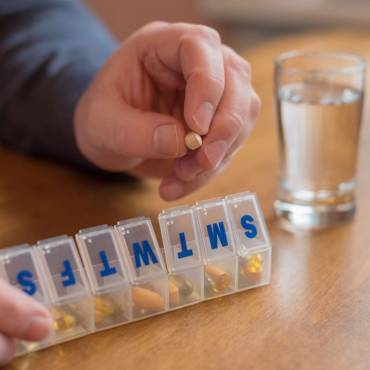Urinary tract infection (UTI) is reckoned among the most common diseases affecting both men and women world-wide. Though it rarely becomes fatal, but the understanding of urinary infection symptoms is very important to diagnose the problem in a better way.
According to the health studies, at least one form of urinary tract infection is experienced by more than 50% of women during their lifetime. While the conditions of UTI vary from mild to severe; some 20-30% of women witness its recurrence due to various urinary tract infections or a urine infection causes. Identify those causes and take a timely action to get rid of urinary infection completely.
Anatomy of urinary tract infection:
The secretion of urine involves a system comprising kidney, bladder and urethra; any infection affecting any part of this system results urinary tract infection which is also known as cystitis. Generally, such infections are caused by microbes, very small organisms that are hard to see from naked eye that can be fungi, viruses, and bacteria. Escherichia coli is the most common bacterium causing urinary infection symptoms at a large scale.
In the medical term, the infection in the bladder is called cystitis; the infected urethra is called Urethritis, and infection attack on the kidneys is known as Pyelonephritis. Normally, the harmful bacteria are found in the digestive system and around the rectum that enter the urinary tract and infect the system. In males the opening of the urethra is the tip of the penis, and in females it is located at the frontal part of vagina.
Also Read: Osteoporosis and the ways to deal with it
Causes of urinary tract infection:
The causes or say bacteria behind the urine infection in both men and women are almost same. Since females have less distance (1.5 inches) between the rectum and urethra as compared to men (with 8 inches), women are more vulnerable to the urinary tract infection. The other causes of UTI are:
• Unsafe sexual activity
• Menopause
• Contraception (in rare cases)
• Pregnancy
Other than these some very common urine infection causes can be counted as:
• Allergies
• Enlarged prostate
• Aging
• Kidney problems
• Certain antibiotics
• Poor hygiene
• The use of catheters
• Diabetes
• Neurogenic bladder
• Sickle cell anemia
• Low immunity power
• Abnormalities of the urinary tract
Signs and symptoms of urinary tract infection:
Basically, the urine infection symptoms can be divided into two categories – lower UTI and upper UTI (pyelonephritis).
The lower UTI is also called bladder infection that can be identified through different health conditions, such as:
• The inflamed and irritated bladder
• Burn or painful feeling with urination
• More frequent urination and nocturia (waking up at night to urinate)
• Feeling sensation to urinate urgently
• Pelvic pressure or abdominal pain, flank pain
• Secretion of blood and pus in urine
• Bad smell of urine
• Mild fever
• Nausea and vomiting
Also Read: Health benefits of wheat grass juice
Symptoms of upper UTI:
Probably, the symptoms of upper UTI develop very fast and affect your body within a short span of time. Its visible symptoms are:
• High fever (more than 101 F)
• Vomiting
• Shiver or shaking chills
• Nausea
• Vomiting
• Flank pain
There are some more symptoms that indicate the presence of UTI, such as:
• Diarrhea
• Poor body development
• Poor appetite
• Irritability
• Lethargy
• Loose bowels
• Poor eating
• Change in urination pattern
Diagnosis of UTI:
The treatment procedure of UTI starts with a physical examination and lab tests to evaluate the nature of urine infection causes and the severity level. Your doctor will analyze all information related to the urine infection symptoms, medical history, living conditions, and your lifestyle.
Usually a urine dipstick test is performed to know the exact bacteria causing the urinary infection. In some cases, the urine sample may be “cultured” that means the urine is tested on a sterile nutrient substance in a particular plastic case. This test helps doctors to identify the bacteria and decide the most effective antibiotic to eliminate that.
You may also have to go through some other tests like:
• Kidney scan
• Kidney ultrasound
• Intravenous pyelogram (IVP)
• Voiding cystourethrogram
• CT scans of the abdomen
Antibiotics to treat UTI:
The antibiotic drugs are proved to be very effective to diagnose and prevent urine infection causes to a great extent. Some of those antibiotics include:
• Fosfomycin
• Levofloxacin
• Ciprofloxacin
• Nitrofurantoin
• Sulfamethoxazole with Trimethoprim
Home or natural methods to treat urinary infection symptoms:
There are some home remedies that don’t require expert advice and you can just follow them regularly. These methods include:
• More consumption of foods rich-in vitamin C
• Drink more water to flush infectious bacteria
• Use herbal remedies
• Use mild heat to soothe UTI pain
• Healthy diet
• Avoid caffeine, alcohol, carbonated drinks, spicy food, nicotine, junk foods and artificial sweeteners
• Include healthier habit in lifestyle
• Keep proper sanitation
Conclusion:
Every urinary infection is not perilous, but if you feel its presence then take an effective treatment as soon as possible. What happens in most cases, we tend to ignore the urine infection symptoms unless they pose serious challenge. Don’t allow this to happen with you. And no need to mention that your healthy lifestyle will make a difference, so keep it with your side.




